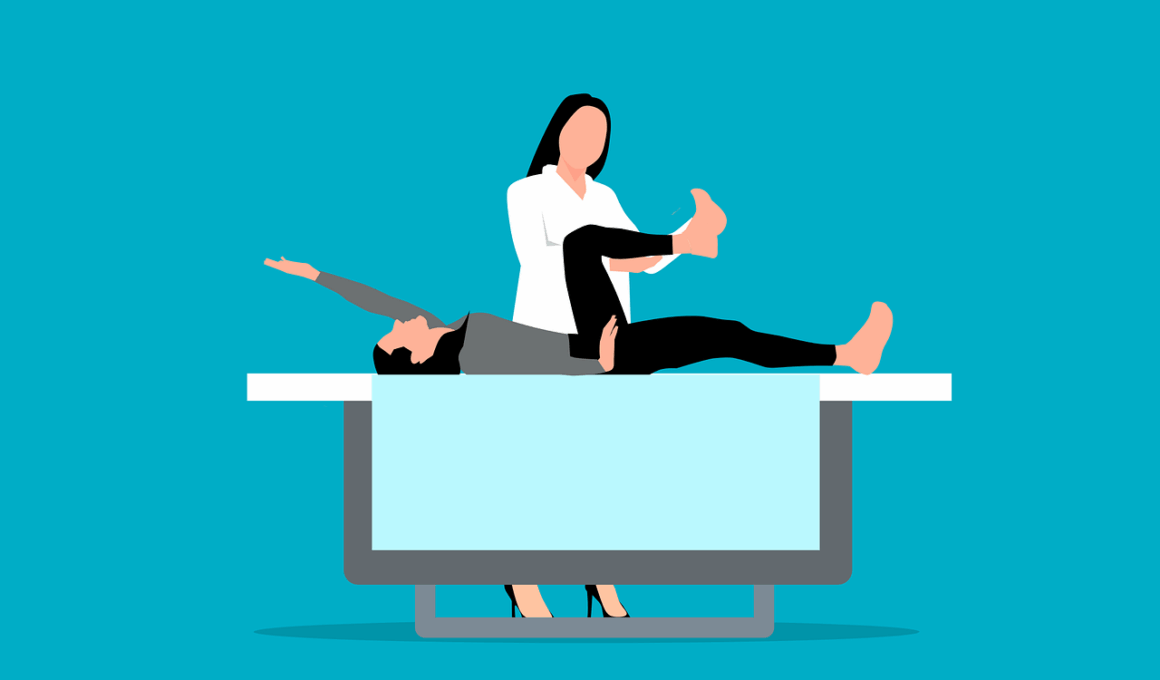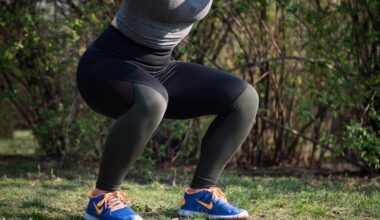Combining Pilates with Physical Therapy for Optimal Rehabilitation
Pilates is an exceptional method that emphasizes core strength, flexibility, and body awareness. By integrating Pilates into physical therapy, patients can enhance their recovery process following injuries or surgeries. This approach focuses on individualized programs tailored to specific rehabilitation goals, which may include pain reduction and functional restoration. The fluid movements characteristic of Pilates promote muscle engagement and control, essential for effective recovery. Furthermore, practitioners guide patients through various exercises safely, ensuring they avoid aggravating any existing conditions while still challenging their bodies appropriately. Research has shown that combining Pilates with traditional physical therapy increases patient motivation and engagement, ultimately leading to faster and more successful rehabilitation. The mindful aspect of Pilates also encourages patients to connect with their bodies, fostering awareness of movement patterns that may contribute to pain or dysfunction. Thus, Pilates serves as a complementary tool for therapists, enabling them to address both physical and mental aspects of rehabilitation comprehensively. As a result, patients experience not only physical improvements but also heightened confidence in their movement capabilities.
Physical therapists can incorporate Pilates into their practice by utilizing its principles to guide recovery plans. A well-rounded program may consist of mat work and equipment training that allows for modifications based on individual needs. Utilizing small props, like resistance bands or Pilates rings, can enhance the effectiveness of these exercises. These tools enable therapists to customize the intensity and focus of workouts, targeting specific muscle groups that require strengthening or flexibility improvements. Additionally, the emphasis on breathing techniques in Pilates complements physical therapy by fostering relaxation and reducing anxiety during rehabilitation. Consequently, patients can better manage pain levels while engaging in their recovery. Incorporating movement patterns characteristic of Pilates into rehabilitation helps patients relearn correct postures and movement habits. This is particularly beneficial in preventing future injuries and promoting overall body awareness. Guidance from trained professionals ensures that patients progress safely and effectively, enhancing the overall efficacy of the rehabilitation process. Collaborative efforts between physical therapists and Pilates instructors can yield significant results, creating an integrative approach that benefits patients in achieving optimal recovery.
The Benefits of Pilates in Rehabilitation
One significant advantage of Pilates in a rehabilitation setting is its low-impact nature. This attribute makes it especially suitable for individuals who may be recovering from surgery, accidents, or chronic pain issues. By minimizing stress on joints while still promoting strength and flexibility, Pilates offers an optimal environment for healing. Furthermore, the gradual progression of exercises allows patients to develop physical competency without undue strain. This balance is crucial during the early stages of recovery, where a conservative approach is often necessary. Improved posture and alignment are additional benefits that can specifically aid in rehabilitation. Pilates teaches proper biomechanics, which can alleviate unnecessary strain on the body while performing everyday activities. This knowledge empowers patients to take control of their movements in daily life, contributing to long-term health benefits. Additionally, flexibility gained through Pilates can enhance range of motion, which is often limited post-injury or surgery. Improved flexibility also supports joint health, decreasing risks of future injuries. Overall, the integration of Pilates into rehabilitation offers a variety of advantages critical to a successful and comprehensive recovery journey.
Incorporating psycho-emotional benefits is another vital aspect of combining Pilates with physical therapy. Rehabilitation often takes a toll on mental health, leading to feelings of frustration, anxiety, or depression. Pilates encourages mindfulness and body awareness, helping patients maintain emotional stability throughout their recovery journey. Engaging in focused breathing techniques not only aids in physical recovery but also fosters relaxation and reduces stress. This combination of physical and emotional support presents a holistic approach that is essential for true healing. Communication between therapists and patients is enhanced when Pilates principles are used, ensuring patients are more involved and invested in their rehabilitation process. This partnership is invaluable, as it builds trust and encourages adherence to prescribed exercises. By nurturing this relational dynamic, therapists can better understand individual challenges and tailor interventions accordingly. Group Pilates classes are another great option to consider, as they create a supportive environment that can further motivate individuals on their rehabilitation path. Additionally, these classes can stimulate social interactions that alleviate feelings of isolation often experienced during recovery. Hence, the psycho-emotional component of Pilates complements its physical benefits, resulting in a well-rounded rehabilitation experience.
How to Begin Integrating Pilates into Your Rehabilitation
To start utilizing Pilates in rehabilitation, seeking guidance from qualified professionals is essential. Finding a certified Pilates instructor who has experience working with patients undergoing rehabilitation is foundational. Ideally, this instructor will collaborate closely with physical therapists to create a cohesive treatment plan that reflects each individual’s needs. Additionally, beginning with a focused assessment is crucial, as it enables instructors to identify specific limitations and goals. Understanding a patient’s history and current abilities allows for the development of tailored exercises that facilitate gradual progress. As you embark on this journey, starting with basic movements that emphasize core stabilization and flexibility is recommended. Gradually introducing more complex exercises can be beneficial, allowing for skill development as strength and confidence increase. Carefully monitoring progress is crucial for determining whether adjustments need to be made to the program. Regular feedback from both the instructor and physical therapist fosters an adaptive approach to rehabilitation, ensuring patients remain challenged yet secure. Furthermore, documenting progress helps track changes and maintain motivation throughout the process, as seeing results can be highly encouraging.
Patient education is another critical component to consider when merging Pilates with physical therapy. Patients should be informed about the principles and benefits of Pilates, as this can elevate their commitment to rehabilitation. Addressing any concerns they may have encourages open communication and builds trust in the therapeutic relationship. Workshops or informational sessions regarding Pilates may serve to familiarize patients with its concepts and practices. Participation in classes can allow patients to combine learning with movement, enhancing the experience. Furthermore, discussing realistic expectations and timelines regarding recovery can aid in managing their aspirations. Realistic goals can prevent feelings of frustration that arise due to perceived slow progress. Encouraging patience throughout the rehabilitation process allows patients to embody their journey fully, celebrating small victories along the way. Reinforcing that recovery is not linear helps foster a resilient mindset, ultimately contributing to greater satisfaction with their rehabilitation experience. This educational approach paves the way for a more seamless integration of Pilates, promoting better outcomes and lasting benefits for patients engaged in rehabilitation.
Conclusion: The Future of Rehabilitation with Pilates
As the demand for holistic and comprehensive approaches to rehabilitation continues to grow, the integration of Pilates seeks to elevate patient outcomes significantly. The effectiveness of this methodology lies in its focus on personalized care, emphasizing the importance of addressing the individual as a whole rather than merely the injury. Its principles empower patients with the knowledge and skills they need to navigate their recovery journey confidently. The collaborative effort between physical therapists and Pilates instructors creates an ecosystem in which healing can flourish, allowing for greater engagement in rehabilitation. Furthermore, ongoing research and development will likely continue to support the effectiveness of Pilates in therapeutic settings, leading to expanded best practices in the future. Sharing success stories and data can promote awareness about the benefits of Pilates for rehabilitation, encouraging more practitioners to adopt this approach. As education and visibility increase, more patients may have access to Pilates programs tailored to their rehabilitation needs. Ultimately, integrating Pilates into rehabilitation can reshape recovery experiences, creating a paradigm of healing that inspires resilience and lifelong health.
Ultimately, the future of rehabilitation utilizing Pilates looks promising. It reflects a trend toward embracing a holistic view of health and wellness that considers both physical and emotional health in the healing process. Strengthening this collaborative model of care between various specialists within the healthcare community will ensure patients receive well-rounded and individualized assistance on their recovery journeys. Moreover, as methods evolve with technological advancements, the potential for Pilates to integrate with new rehabilitation tools and practices seems limitless. Improving accessibility for all patients through adaptive Pilates programming further supports those who may have unique needs during recovery. In conclusion, the merging of Pilates and physical therapy represents a significant step toward optimizing rehabilitation. This innovative and compassionate approach puts the patient at the forefront of the healing process, enabling them to take an active role in their rehabilitation. Encouraging self-efficacy and fostering resilience are invaluable components of recovery that will lead to enhanced long-term outcomes. As Pilates continues to gain recognition within rehabilitation landscapes, patients will increasingly benefit from this intelligent and effective method of restoring their health and vitality.


